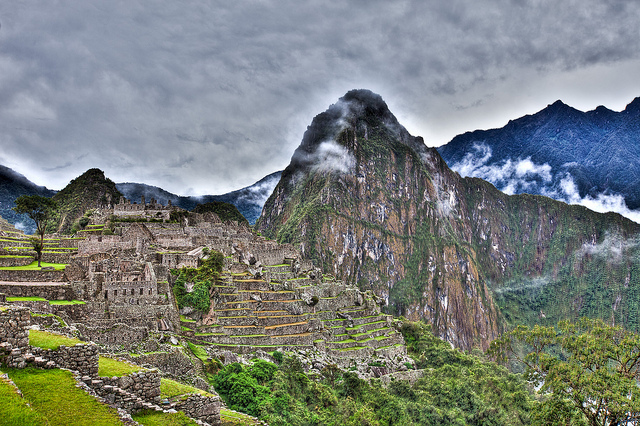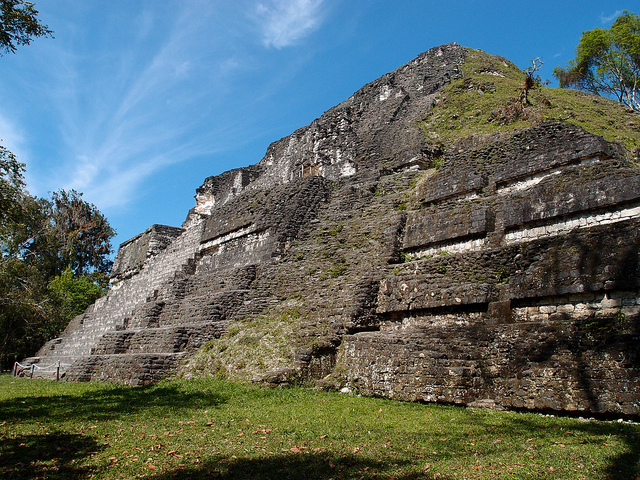We have visited the topic of ancient architecture here at Kenny Slaught’s Blog on many occasions. We never stop being amazed by the breath-taking marvels of construction left behind by our ancestors since the dawn of time. Even though only a handful of them still remain intact in the old world; we can still find impressive structures built thousands of years ago in the new continent by cultures whose secrets we are still struggling to fully understand. Today we present to you, seven different man-made structures that embody everything that we find magical and amazing about architecture, and that still leaves us in awe when we try to comprehend how so long ago, with such limited technology, the tenacity of these peoples was able to create works that remained as their legacy and will probably endure beyond our own existence in this earth.
The Moai – Easter Island, Chile
Easter Island is an island located in the southeastern Pacific Ocean belonging to Chile where the Rapa Nui people, originally from Polynesia, settled over a thousand years ago. The Rapa Nui carved giant monolithic human figures called the Moai and transported them to different locations all around the island to look across their land. The Moai are wrongly known as “Easter Island Heads” due to their large size of the heads that are about three-eighths the size of the whole statue making the body dwarf in comparison. The statues are carved from different types or rock found throughout the island and archeologist believe they could have represented symbols of protection for the Rapa Nui as well as a way to honor their fallen ancestors.
Machu Picchu – Cusco Region, Peru
Machu Picchu is hands down, one of the most beautiful and impressive works of ancient architecture in the entire world. The citadel is the most famous example of the legacy of the Inca civilization and archeologist believe it was built as the palace of the ruling emperor at the time. The city was never discovered nor plundered by the Spanish Conquistadors, but it was abandoned by the natives, possibly running away from their eventual demise or decimated by smallpox as the invaders introduced it. One of the most impressive features of the architecture of the site is the manner in which stones fit together without the use of mortar but simply by being cut with the utmost precision.

Teotihuacán – Mexico
During its prime, the ancient city had the largest population of any settlement in the Americas and was the sixth largest city in the world at this time. Teotihuacan is famous for being a multicultural city inhabited not only by the Aztecs but also by other ethnic group whom with the shared their traditions and language. The layout of the city was planned in accordance with their vast knowledge of astronomy, something that helped track the passing of time and the most ideal seasons for planting their crops. The most famous features of the citadel are the pyramids and amongst them, the Pyramid of the Sun stands out for being the third largest in the world.
The Nazca Lines – Peru
While they are not purely architectural and differ greatly in structure from the rest of entries in this list, the Nazca Lines are amazing achievements of human ingenuity, present in the middle of the desert in southern Peru. The lines are believed to represent religious symbols made by the Nazca culture more than 1500 years ago. The dry weather and practically non-existent winds are the reason why these shallow markings, mostly visible from the air, still remain present after so long. Most of the lines are simply geometrical in nature, but the most famous ones are designs of animals and human figures.
Tikal – Guatemala
Tikal is the remains of an ancient city located in the forests of Guatemala. The city was one of the most powerful settlements of the Mayan culture and it was built around the 4th century BC. The city was mostly built out of limestone and its ruins contain remains of temples, palaces and even some smaller pyramids. It is believe that there are thousands of structures that make up Tikal that are yet to be unearthed. The University of Pennsylvania along with the government of Guatemala is currently working on the conservation and study of the city.

Tiahuanaco – Bolivia
Tiahuanaco is another pre-Columbian archeological site in Mesoamerica located in Bolivia. The site was a small agricultural village that contained some of the most beautifully carved and built gateways ever seen in ancient architecture. Sadly, the current state of Tiahuanaco is mostly of ruins, but efforts of restoration are underway.
Saksaywaman – Cusco, Peru
In the northern area of the region of Cusco, you can find the amazing walls that mark the limits of the citadel of Sacsayhuaman. The massive stones that make up the walls, are the heaviest present in constructions of the prehispanic era, and as we mentioned before, they were put together without using any mortar at all.